Science & Environment
Trump crypto project allows ex-president family to make 75% of revenue

Donald Trump’s crypto project, World Liberty Financial, published a 13-page document on Thursday, describing its mission, how tokens can be allocated, and indicating that the Republican presidential nominee and his family could take home 75% of net revenue.
In what it calls the “World Liberty Gold Paper,” WLF said the Trump family will receive 22.5 billion “$WLFI” tokens, currently valued at $337.5 million, based on the price of 1.5 cents per token at launch this week.
Trump, who’s in a virtual dead heat with Vice President Kamala Harris as the election reaches its closing stages, has spent months pumping his crypto project, previously branding it as “The DeFiant Ones,” a play on DeFi, short for decentralized finance.
On Tuesday, the project launched the WLFI token and said in a roadmap that it was looking to raise $300 million at a $1.5 billion valuation in its initial sale. As of Thursday, only $12.9 million worth of the token have been sold, according to its website.
The paper released on Thursday shows that Trump and his family assume no liability. It indicates that none of them are directors, employees, managers or operators of WLF or its affiliates, and said the project and the tokens “are not political and have no affiliation with any political campaign.”
Neither WLF nor the Trump campaign immediately responded to a request for comment.
Crypto projects typically release white papers before they launch their coins, offering a guide so that investors can learn more about the mission, goals and how future tokens get allocated. WLF’s paper says that a Delaware-based company named DT Marks DEFI LLC, which is connected to the former president, is set to receive three-quarters of the net protocol revenues.
WLF bills itself as a crypto bank where customers will be encouraged to borrow, lend and invest in digital coins. The document released Thursday defines net protocol revenue as income to WLF from “any source, including without limitation platform use fees, token sale proceeds, advertising or other sources of revenue, after deduction of agreed expenses and reserves for WLF’s continued operations.”
Some $30 million of the the initial revenue is earmarked to be held in a reserve intended to cover operating expenses and other financial obligations.
The remaining 25% of net protocol revenue is set to go to Axiom Management Group, or AMG, a Puerto Rico LLC wholly owned by Chase Herro and Zachary Folkman, two of the co-founders.
Folkman previously had a company called Date Hotter Girls and reportedly helped develop crypto project Dough Finance. Herro worked on Dough and launched another crypto trading business a decade ago called Pacer Capital, which appears to now be defunct.
AMG has agreed to allocate half of its rights to net protocol revenues to a third LLC called WC Digital Fi, which is an affiliate of Trump’s close friend and political donor, Steve Witkoff, as well as to “certain of his family members.” Witkoff’s son, Zachary, is also listed as one of the co-founders of the project.
Folkman previously said just 20% of WLF’s tokens would be allotted to the founding team, which includes the Trump family. The paper spells out the breakdown of anticipated coin allocation, with 35% of total supply allocated to the token sale, 32.5% to community growth and incentives, 30% to initial support allocation, and 2.5% to team and advisors.
The document specifies in the fine print that these “anticipated token distribution amounts are subject to change.” It’s unclear which categories include Trump and his family.
The paper calls Trump the “chief crypto advocate.” His three sons are all “Web3 ambassadors.”
Science & Environment
JPMorgan says buy power producers as AI data centers shift electric demand
Science & Environment
Crude oil prices edge higher after four-day losing streak
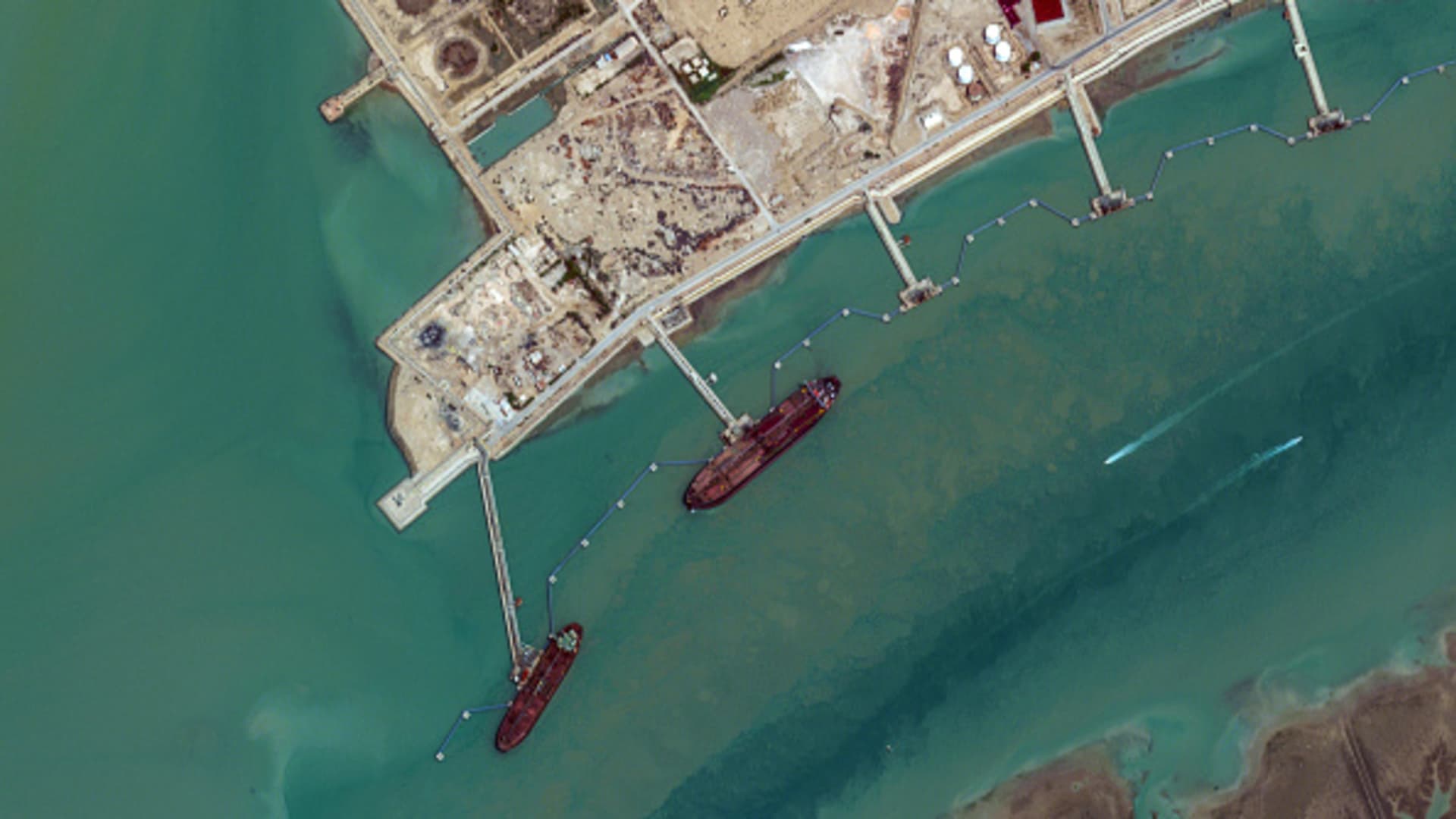

Crude oil futures rose slightly Thursday after a four-day losing streak as fears of a supply disruption in the Middle East eased and a surplus looms over the market next year.
Although Israel has held back from retaliating against Iran so far, the situation “could change at a moment’s notice,” said Aditya Saraswat, Middle East research director at Rystad Energy.
“In a widespread regional war scenario, Iran and Israel’s conflict could severely impact gas exports and lead to delays in oil development projects,” Saraswat said in a note Thursday.
Here are Thursday’s energy prices:
- West Texas Intermediate November contract: $70.40 per barrel, up 1 cent, or 0.01%. Year to date, U.S. crude oil has fallen down nearly 2%.
- Brent December contract: $74.24 per barrel, up 2 cents, or 0.03%. Year to date, the global benchmark has declined more than 3%.
- RBOB Gasoline November contract: $2.0358 per gallon, down 0.22%. Year to date, gasoline has pulled back more than 3%.
- Natural Gas November contract: $2.374 per thousand cubic feet, up 0.3%. Year to date, gas has declined more than 5%.
Israel has reportedly told the U.S. that it will refrain from hitting Iran’s oil facilities in retaliation for the Islamic Republic’s Oct. 1 ballistic missile attack. The oil market sold off steeply Tuesday on reports that Israel will limit its strike to military targets in Iran.
An attack on oil facilities, however, could disrupt 1.4 million bpd of Iran’s production, Saraswat said. A full-blown war could lead to Iran choking the Strait of Hormuz, jeopardizing 12 million bpd of oil and “driving up prices sharply,” the analyst said.
Science & Environment
Helene, Milton losses expected to surpass “truly historic” $50 billion each
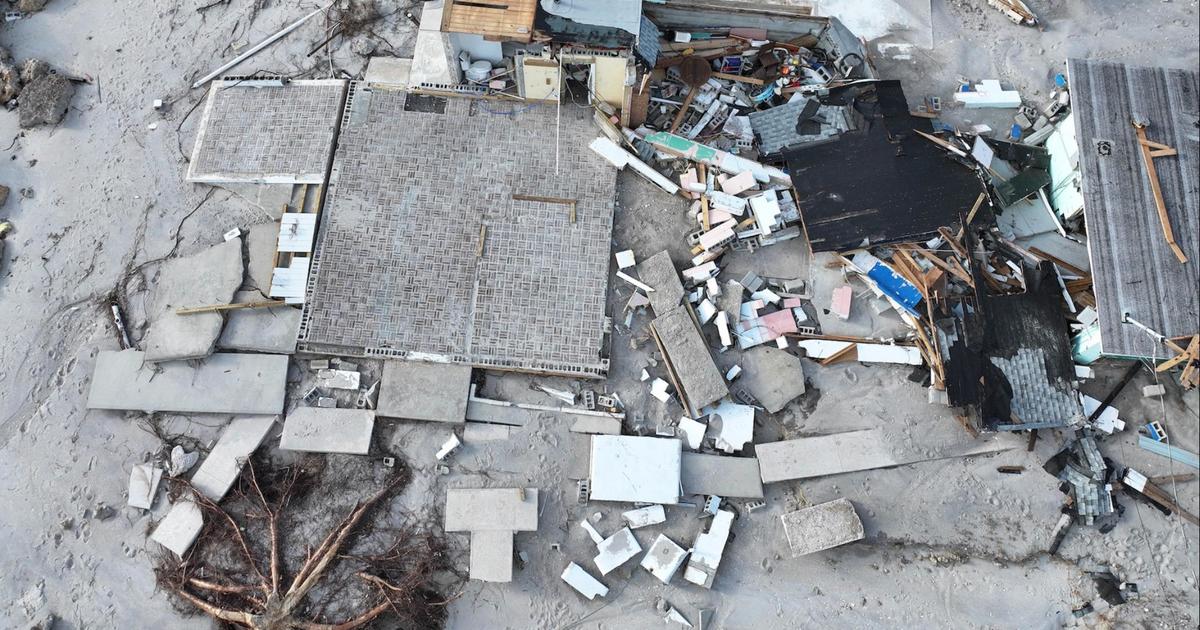
Monstrous hurricanes Helene and Milton caused so much complex havoc that damages are still being added up, but government and private experts say they will likely join the infamous ranks of Katrina, Sandy and Harvey as super costly $50-billion-plus killers.
Making that even more painful is that most of the damage – 95% or more in Helene’s case – was not insured, putting victims in a deeper financial hole.
Storm deaths have been dropping over time, although Helene was an exception. But even adjusted for inflation, damages from intense storms are skyrocketing because people are building in harm’s way, rebuilding costs are rising faster than inflation and human-caused climate change are making storms stronger and wetter, experts in different fields said.
“Today’s storms, today’s events are simply vastly different from yesterday’s events. One of the things that we’re seeing is the energy content that these systems can retain is significantly greater than it used to be,” said John Dickson, president of Aon Edge Insurance Agency, which specializes in flood coverage. “The weather seems to be, in many cases, moving faster than we as a society are able to keep pace with it.”
In the last 45 years, and adjusted for inflation, the National Oceanic and Atmospheric Administration has counted 396 weather disasters that caused at least $1 billion in damage. Sixty-three of those were hurricanes or tropical storms.
The $50 billion mark for direct losses is a threshold that differentiates “truly historic events,” said Adam Smith, the economist and meteorologist who runs the list out of NOAA’s National Center for Environmental Information in Helene-hit Asheville, North Carolina.
Only eight hurricanes reached that threshold. Smith said he thought Milton and Helene have “a very good shot” of joining that list.
The first $50 billion hurricane was Andrew in 1992. The U.S. went 13 more years before Katrina topped the damages chart, then seven years until the third costly whopper, Sandy. Helene and Milton would make seven in the last seven years.
Calculating damages is far from an exact science. The more complex and nastier storms are – like Milton and Helene – the longer it takes, Smith said. Damage is spread over different places and often a much larger area, with wind damage in some places and flood damage elsewhere. Helene, in particular, caused widespread flooding and in places not used to it. Estimates for those storms from private firms in recent days vary and are incomplete.
There’s three categories of damage: insured damage, uninsured damage and total economic cost. Many risk and insurance firms only estimate insured losses.
Homeowner insurance usually covers wind damage, but not flood. Special insurance has to be bought for that. Flood insurance coverage rates vary by region and storms differ on whether they cause more wind or water damage. Helene was mostly water damage, which is less likely to be covered, while Milton had a good chunk of wind damage.
Of the top 10 costliest hurricanes as compiled by insurance giant Swiss Re – not including Helene or Milton yet – insured damage is about 44% of total costs.
But with Helene, Aon’s Dickson estimated that only 5% of victims had insurance coverage for the type of damage they got. He estimated $10 billion in insured damage so doing the math would put total damage in the $100 billion to $200 billion range, which he called a bit high but in the ballpark. Insured losses for Milton are in the $50 billion to $60 billion range, he said.
With Helene, Swiss Re said less than 2% of Georgia households have federal flood insurance, with North Carolina and South Carolina at 3% and 9%. In North Carolina’s Buncombe County, where more than 57 people died from Helene’s flooding, less than 1% of the homes are covered by federal flood insurance, the agency said.
Risk modeling by Moody’s, the financial services conglomerate, put a combined two-storm total damage estimate of $20 billion to $34 billion.
Karen Clark and Company, a disaster modeling firm that uses computer simulations superimposed on storm and insurance data, wouldn’t give total damage estimates for the storms. But the company figured insured losses alone were $36 billion for Milton and $6.4 billion for Helene.
“The economic losses are going up because we’re putting more infrastructure and housing in harm’s way,” said University of South Carolina’s Susan Cutter, co-director of the Hazards Vulnerability and Resilience Institute, who added that climate change also plays a role. “Human losses and deaths are going down because people are being a little bit more vigilant about paying attention to preparedness and getting out of harm’s way.”
Much of the damage is because of flooding. Studies show that hurricanes are getting wetter because of the buildup of heat-trapping gases from the burning of coal, oil and gas. Basic physics dictates that clouds hold 4% more moisture for every degree Fahrenheit, and that falls as rain.
“There is scientific agreement that floods and flooding from these hurricanes is becoming more frequent and more severe. So it is likely that we’re going to be seeing a higher frequency of storms like Helene in the future,” said Karen Clark, who founded her namesake firm. “It’s not really an insurance issue because it’s not privately insured. This is really a societal issue and political question. How do we want to deal with this?”
Clark and several of the experts said it’s time for society to think about where it builds, where it lives and if it should just leave dangerous areas and not rebuild, a concept called “managed retreat.”
“At what point do you as an individual continue to build, rebuild, rebuild and rebuild versus saying ‘OK, I’ve had enough’,” Cutter said.
And when it comes to flood insurance, many homeowners in risky areas find it’s too expensive, so they don’t buy it, Clark said. But when a storm hits them, she said “all of us as taxpayers, we’re going to pay it because we know there are going to be federal dollars coming into those areas to help people rebuild. So all taxpayers, we’re actually paying for people to live in risky areas.”
Science & Environment
Sewage illegally dumped into Windermere repeatedly over 3 years, BBC finds

 Getty Images
Getty ImagesA water company repeatedly dumped millions of litres of raw sewage illegally into one of England’s most famous lakes over a three-year period, the BBC can reveal.
More than 140 million litres of waste were pumped into Windermere between 2021 and 2023 at times when it was not permitted, our analysis shows, and United Utilities failed to report most of it.
It means the company’s illegal dumping of sewage into the lake went on for far longer, and was far more extensive, than was previously known.
United Utilities said some of its sewage releases into Windermere were “potentially non-compliant” but that it self-reports “over 94% of potential pollution incidents to the Environment Agency”.
Matt Staniek, a campaigner against sewage pollution and founder of Save Windermere, said Windermere was “the jewel in the crown of the Lake District National Park, and it’s being used as an open sewer”.
It is sometimes necessary to release sewage into rivers and lakes to stop the wastewater system from being overwhelmed by heavy rain, but this pollution can damage the environment, causing harmful algal blooms and even killing fish.
In January this year – after BBC Panorama revealed the company had downplayed the severity of dozens of pollution incidents, some involving Windermere – United Utilities retrospectively reported some discharges into the lake from October 2023 onwards.
But since then the BBC has obtained United Utilities operations data going back to January 2021 which shows that illegal discharges had been taking place for more than three years, far longer than the discharges in the four months the company retrospectively reported.
The data involved Glebe Road pumping station in Bowness-on-Windermere, the only site which discharges directly into the lake, which is designed to pump wastewater from the local area to the nearby sewage works for treatment.
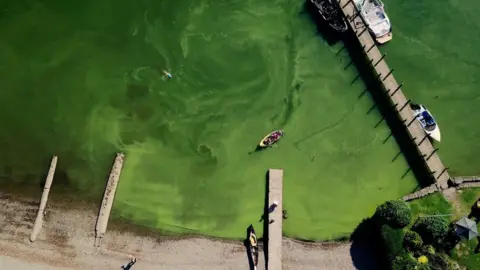 Save Windermere
Save WindermereIt is authorised by the Environment Agency to release raw sewage into the lake in certain circumstances during wet weather, as long as it is pumping at least 245 litres of sewage a second to the treatment works.
That condition, written in the site’s environmental permit, is supposed to protect Windermere and ensure that, even in wet weather, most sewage is sent for treatment. Failing to comply with the permit is a criminal offence.
The BBC analysed data detailing the flow of sewage through the station and the times when waste had been dumped into the lake. We found the station had failed to comply with the permit by discharging sewage into the lake at times when it had not been pumping the required amount for treatment.
As a result, sewage which should have been sent for treatment was dumped into the lake.

Permit breaches should be reported to the Environment Agency, but United Utilities failed to do this for most of the discharges identified by the BBC between the start of 2021 and the end of 2023.
In those three years, we found that United Utilities illegally pumped sewage into Windermere for 165 hours, of which at least 118 hours was not reported to the environmental regulator.
We were able to calculate the volume of the sewage released because it was dumped into the lake using either one or two dedicated pumps, each of which operates at 240 litres per second.
This means that between 143 million and 286 million litres was illegally dumped in the lake, depending how often both pumps were operating.
United Utilities failed to report at least 102 million litres of that pollution.
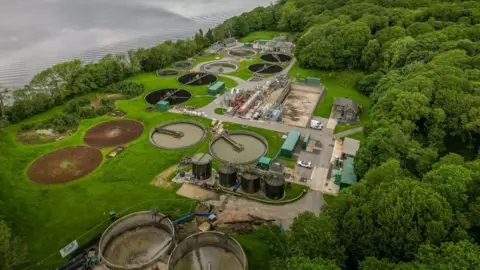 Getty Images
Getty ImagesThe water company declined to provide the BBC with the data showing exactly when each of the pumps into the lake was operating, claiming this data is classed as “internal communications”, which did not have to be disclosed under environmental information regulations.
Mr Staniek, the anti-sewage campaigner, said the failure to report the illegal dumping was “totally and utterly outrageous”, adding that: “Windermere is so culturally significant to the entire nation this isn’t just about a local issue.”
He said: “Part of the permit is to ensure that they are complying and that they’re analysing the data so they’re either incompetent or they knew about this and they profited from it and it’s Windermere that suffered. And I think it’s the latter.
‘Under-resourced and incompetent’
United Utilities insiders told the BBC the company would have known that it was illegally discharging sewage because alarms and internal reports alert staff when treatment works or pumping stations are failing to comply with their discharge permits.
“We would have been aware of the issue – it would have flagged up on flow and spill reports. I’m not surprised we haven’t reported it,” one said.
“We work on a risk management basis and we’ll have judged the risk of the EA finding out and understanding the permit breach would be minimal as they are under-resourced and incompetent.”
United Utilities told us it is committed “to being fully transparent” with the Environment Agency.
A spokesperson said as part of ongoing work to reduce spills in 2024 the company discovered a “technical issue in the configuration of the Windermere system” which meant that some of the discharges from the Glebe Road pumping station were “potentially non-compliant”.
The company has “implemented system changes to prevent a reoccurrence”, the spokesperson said.

United Utilities also said it is starting construction on additional storage and treatment facilities around Windermere, to reduce sewage discharges.
Water companies are judged on the number of pollution incidents they cause each year by the water industry regulator Ofwat and financially rewarded or penalised on their performance.
Environment Agency guidance about calculating the number of illegal discharges during repeated incidents is not clear. So the BBC has treated all illegal discharges within 24 hours of each other as just one “minor” incident, with subsequent incidents only being recorded after a 24-hour period with no illegal dumping.
Using this method, we calculated that illegal discharges we identified could account for 24 extra pollution incidents.
That would mean if the incidents identified by the BBC had been officially reported, it would have cost the company just over £2.5m.
‘Furious and sickened’
United Utilities told the BBC that any potentially non-compliant discharges were reported to the Environment Agency “as soon as we became aware of them”.
Therefore, the company said, it did not benefit from any unjust rewards from Ofwat.
United Utilities only finally reported most of the other discharges earlier this month, after being approached by the BBC and following a request from the Environment Agency.
The company did not answer the BBC’s questions about why it had failed to identify and report those discharges at the time they occurred.
Ofwat told the BBC: “The allegations made against United Utilities in terms of environmental failures and under-reporting of pollution incidents are very serious and where evidence supports further action, we will not hesitate to use all the powers at our disposal.”
The water regulator told the BBC if a water company is found in breach of its obligations, any unjust rewards can be clawed back later through lower bills.
It is not the first time that United Utilities’ pumping station on the edge of Windermere has come under scrutiny.
Earlier this year BBC News reported millions of litres being illegally discharged in one night due to a communications fault and last year BBC Panorama revealed how both United Utilities and the Environment Agency had been downgrading significant pollution incidents to “no impact”.
The Environment Agency said in a statement it had launched a “complex and ongoing” investigation into the sewage discharges from October 2023 onwards that were retrospectively reported by United Utilities, and it was examining further evidence received from the company.
“If any water company is found to be in breach of an environmental permit, the Environment Agency will take the appropriate enforcement action, up to and including a criminal prosecution,” the agency said.
However, the BBC has learned that in the first eight months of the investigation the agency failed to obtain the crucial operational data needed to uncover illegal pollution in 2023 – data which was obtained and analysed by the BBC.
The Environment Agency has now confirmed it has this data. Told about the BBC’s analysis showing that the illegal pollution appears to have occurred for more than two years before the period being investigated, the agency said it will now review the evidence and scope of the criminal investigation.
During the election campaign, the now Prime Minister Sir Keir Starmer said he was “furious and sickened” to hear the BBC’s earlier revelations about sewage pumped illegally into Windermere and promised “severe and automatic fines that no water companies can ignore”.
Environment Secretary Steve Reed said it was “disgusting that somewhere as beautiful as Lake Windermere is swilling with raw sewage” but said the government is already taking action, introducing legislation to ban polluting bosses from receiving bonuses or even send them to prison.
United Utilities was recently given permission by Ofwat to raise bills to claim an extra £33.2m in profit as a reward for its 2023 performance, while the Environment Agency awarded the company the top 4* environmental rating earlier this year.
Science & Environment
White blobs washing up on Newfoundland beaches stump experts and worry resident beachcombers

Toronto — Beaches across Canada’s far northeast Newfoundland and Labrador province have increasingly been littered with mysterious white blobs. Their appearance has so far befuddled scientists, and led Canadian officials in the region to launch an investigation.
Beachgoers first noticed the unusual blobs on the shores of Newfoundland and Labrador in September. People quickly started sharing photos of the gelatinous clumps on a Facebook group with more than 40,000 members that is dedicated to exploring the region’s coastal areas.
“Anyone know what these blobs are. They are like touton dough and all over the beach,” wrote Philip Grace on the Beachcombers Facebook group, comparing the finds to a regional dish. “These were in sizes ranging from dinner plate size right down to a toonie [Canadian 2-dollar coin].”
Some people speculated online that the mystery blobs could be the result of ships dumping substances into the ocean. Others suggested they could be whale sperm, whale vomit or even ambergris, a byproduct of sperm whales that’s valued for its use in perfumes and other products.
But the experts weren’t to be dragged into the speculation.
Environment and Climate Change Canada, the government agency responsible for investigating the mystery, simply referred to the blobs as “a mystery substance” when asked by CBS News on Tuesday.
Newfoundland resident David McGrath told The Guardian newspaper that he’d seen hundreds of the items scattered across his local beaches.
“They looked just like a pancake before you flip it over, when it has those dimpled little bubbles. I poked a couple with a stick and they were spongy and firm inside,” he told the newspaper. “I’ve lived here for 67 years, and I’ve never seen anything like this. Never.”
“They sent the Coast Guard over and I asked them how bad it was. They told me they had 28 miles of coastline littered with this stuff and had no idea what it was,” McGrath said. “Is it toxic? It is safe for people to touch?”
Samantha Bayard, a spokesperson for Environment and Climate Change Canada, told CBS News the agency was first informed about the “mystery substance” on beaches on Sept. 7. Environmental emergency officers visited sites at least three times to assess the situation and collect samples.
“To date, ECCC has conducted several aerial, underwater and manual surveys of the beaches and shorelines in the area to determine the extent of the substance, what it is and its potential source,” she said. “At this time, neither the substance nor its source has been identified.”
Bayard said a preliminary laboratory analysis by the agency suggested the material “could be plant-based,” but stressed that additional analysis was required “before a final determination can be made on the substance and its potential impacts.”
Stan Tobin, a local environmentalist, told CBS News’ partner network BBC News that he’d found “hundreds and hundreds of blobs — big blobs, little blobs.”
“Somebody or somebodies know where this came from and how it got there, and knows damn well it’s not supposed to be here,” Tobin told the BBC.
Bayard said the ECCC was committed to addressing pollution incidents and environmental threats with urgency.
“If enforcement officers find evidence of a possible violation of federal environmental legislation, they will take appropriate action in accordance with the applicable Compliance and Enforcement Policy,” she told CBS News.
Science & Environment
Bitcoin hits highest level since July, boosting crypto-related stocks

Avishek Das | Lightrocket | Getty Images
The price of bitcoin neared $68,400 on Wednesday, reaching its highest level since July and sparking a rally across the crypto sector.
Bitcoin is up more than 9% over the last week and ether is up about 7%. Other popular coins have also rallied, with solana up close to 10% in the past seven days and and dogecoin up 15%.
The gains have made their way to crypto-pegged stocks. Digital asset exchange Coinbase climbed almost 7% on Wednesday, bringing its three-day rally to 19%. The stock is at its highest since August.
Bitcoin miners Marathon Digital and Riot Platforms also moved higher on Wednesday.

Bitcoin and Coinbase move higher in the last week.
One reason for bitcoin’s 53% gain so far this year is a host of new spot bitcoin exchange-traded funds that hit the market in January, welcoming in a host of new investors. Ether ETFs followed in July.
Samara Cohen, chief investment officer of ETF and index investments at BlackRock, told CNBC recently that 80% of buyers of its iShares Bitcoin Trust (IBIT) are direct investors. Of those, 75% have never owned a BlackRock ETF, she said.
“We went into this journey with the expectation that we needed to educate ETF investors on crypto and on bitcoin specifically,” Cohen said. “As it turns out, we have done a lot of education of crypto investors on the benefits of the ETP wrapper.”

-

 Science & Environment4 weeks ago
Science & Environment4 weeks agoHyperelastic gel is one of the stretchiest materials known to science
-

 Technology4 weeks ago
Technology4 weeks agoWould-be reality TV contestants ‘not looking real’
-

 Technology3 weeks ago
Technology3 weeks agoIs sharing your smartphone PIN part of a healthy relationship?
-

 Science & Environment4 weeks ago
Science & Environment4 weeks ago‘Running of the bulls’ festival crowds move like charged particles
-

 Science & Environment4 weeks ago
Science & Environment4 weeks agoHow to unsnarl a tangle of threads, according to physics
-

 Science & Environment4 weeks ago
Science & Environment4 weeks agoMaxwell’s demon charges quantum batteries inside of a quantum computer
-

 Science & Environment4 weeks ago
Science & Environment4 weeks agoLiquid crystals could improve quantum communication devices
-

 Womens Workouts3 weeks ago
Womens Workouts3 weeks ago3 Day Full Body Women’s Dumbbell Only Workout
-

 Science & Environment3 weeks ago
Science & Environment3 weeks agoX-rays reveal half-billion-year-old insect ancestor
-

 Science & Environment4 weeks ago
Science & Environment4 weeks agoQuantum ‘supersolid’ matter stirred using magnets
-

 Science & Environment4 weeks ago
Science & Environment4 weeks agoSunlight-trapping device can generate temperatures over 1000°C
-

 Science & Environment4 weeks ago
Science & Environment4 weeks agoWhy this is a golden age for life to thrive across the universe
-

 Science & Environment4 weeks ago
Science & Environment4 weeks agoQuantum forces used to automatically assemble tiny device
-

 Science & Environment4 weeks ago
Science & Environment4 weeks agoNerve fibres in the brain could generate quantum entanglement
-

 Science & Environment4 weeks ago
Science & Environment4 weeks agoLaser helps turn an electron into a coil of mass and charge
-

 Science & Environment4 weeks ago
Science & Environment4 weeks agoITER: Is the world’s biggest fusion experiment dead after new delay to 2035?
-

 Science & Environment4 weeks ago
Science & Environment4 weeks agoA slight curve helps rocks make the biggest splash
-

 Science & Environment4 weeks ago
Science & Environment4 weeks agoHow to wrap your mind around the real multiverse
-
News1 month ago
the pick of new debut fiction
-

 News4 weeks ago
News4 weeks agoOur millionaire neighbour blocks us from using public footpath & screams at us in street.. it’s like living in a WARZONE – WordupNews
-

 Science & Environment4 weeks ago
Science & Environment4 weeks agoTime travel sci-fi novel is a rip-roaringly good thought experiment
-

 Science & Environment4 weeks ago
Science & Environment4 weeks agoNuclear fusion experiment overcomes two key operating hurdles
-

 Technology3 weeks ago
Technology3 weeks agoWhy Machines Learn: A clever primer makes sense of what makes AI possible
-

 Science & Environment4 weeks ago
Science & Environment4 weeks agoPhysicists are grappling with their own reproducibility crisis
-

 News1 month ago
News1 month ago▶️ Hamas in the West Bank: Rising Support and Deadly Attacks You Might Not Know About
-

 News4 weeks ago
News4 weeks ago▶️ Media Bias: How They Spin Attack on Hezbollah and Ignore the Reality
-

 News4 weeks ago
News4 weeks agoYou’re a Hypocrite, And So Am I
-

 Science & Environment4 weeks ago
Science & Environment4 weeks agoA new kind of experiment at the Large Hadron Collider could unravel quantum reality
-
Business3 weeks ago
Eurosceptic Andrej Babiš eyes return to power in Czech Republic
-

 Technology3 weeks ago
Technology3 weeks agoMicrophone made of atom-thick graphene could be used in smartphones
-

 Business2 weeks ago
Business2 weeks agoWhen to tip and when not to tip
-

 Sport2 weeks ago
Sport2 weeks agoCoco Gauff stages superb comeback to reach China Open final
-

 Science & Environment4 weeks ago
Science & Environment4 weeks agoPhysicists have worked out how to melt any material
-

 Sport4 weeks ago
Sport4 weeks agoJoshua vs Dubois: Chris Eubank Jr says ‘AJ’ could beat Tyson Fury and any other heavyweight in the world
-

 Science & Environment1 month ago
Science & Environment1 month agoCaroline Ellison aims to duck prison sentence for role in FTX collapse
-

 News1 month ago
News1 month agoNew investigation ordered into ‘doorstep murder’ of Alistair Wilson
-
News4 weeks ago
The Project Censored Newsletter – May 2024
-

 Technology2 weeks ago
Technology2 weeks agoUkraine is using AI to manage the removal of Russian landmines
-

 Sport2 weeks ago
Sport2 weeks agoWales fall to second loss of WXV against Italy
-

 Science & Environment4 weeks ago
Science & Environment4 weeks agoRethinking space and time could let us do away with dark matter
-

 Technology3 weeks ago
Technology3 weeks agoQuantum computers may work better when they ignore causality
-

 Sport3 weeks ago
Sport3 weeks agoWatch UFC star deliver ‘one of the most brutal knockouts ever’ that left opponent laid spark out on the canvas
-

 Technology3 weeks ago
Technology3 weeks agoUniversity examiners fail to spot ChatGPT answers in real-world test
-

 Health & fitness4 weeks ago
Health & fitness4 weeks agoThe secret to a six pack – and how to keep your washboard abs in 2022
-

 Science & Environment4 weeks ago
Science & Environment4 weeks agoA tale of two mysteries: ghostly neutrinos and the proton decay puzzle
-

 Technology3 weeks ago
Technology3 weeks agoRobo-tuna reveals how foldable fins help the speedy fish manoeuvre
-
Business3 weeks ago
Should London’s tax exiles head for Spain, Italy . . . or Wales?
-

 MMA3 weeks ago
MMA3 weeks agoConor McGregor challenges ‘woeful’ Belal Muhammad, tells Ilia Topuria it’s ‘on sight’
-

 Football3 weeks ago
Football3 weeks agoFootball Focus: Martin Keown on Liverpool’s Alisson Becker
-
Business2 weeks ago
DoJ accuses Donald Trump of ‘private criminal effort’ to overturn 2020 election
-

 Technology2 weeks ago
Technology2 weeks agoThis AI video generator can melt, crush, blow up, or turn anything into cake
-

 Sport3 weeks ago
Sport3 weeks agoWorld’s sexiest referee Claudia Romani shows off incredible figure in animal print bikini on South Beach
-

 News4 weeks ago
News4 weeks agoIsrael strikes Lebanese targets as Hizbollah chief warns of ‘red lines’ crossed
-

 Science & Environment4 weeks ago
Science & Environment4 weeks agoFuture of fusion: How the UK’s JET reactor paved the way for ITER
-

 Technology3 weeks ago
Technology3 weeks ago‘From a toaster to a server’: UK startup promises 5x ‘speed up without changing a line of code’ as it plans to take on Nvidia, AMD in the generative AI battlefield
-

 Technology1 month ago
Technology1 month agoThe ‘superfood’ taking over fields in northern India
-
Politics4 weeks ago
UK consumer confidence falls sharply amid fears of ‘painful’ budget | Economics
-

 News4 weeks ago
News4 weeks agoWhy Is Everyone Excited About These Smart Insoles?
-

 Technology3 weeks ago
Technology3 weeks agoGet ready for Meta Connect
-

 Health & fitness3 weeks ago
Health & fitness3 weeks agoThe 7 lifestyle habits you can stop now for a slimmer face by next week
-
Business2 weeks ago
Bank of England warns of ‘future stress’ from hedge fund bets against US Treasuries
-

 Technology2 weeks ago
Technology2 weeks agoAmazon’s Ring just doubled the price of its alarm monitoring service for grandfathered customers
-

 News2 weeks ago
News2 weeks agoHeartbreaking end to search as body of influencer, 27, found after yacht party shipwreck on ‘Devil’s Throat’ coastline
-
Politics3 weeks ago
Robert Jenrick vows to cut aid to countries that do not take back refused asylum seekers | Robert Jenrick
-
Business2 weeks ago
Ukraine faces its darkest hour
-

 TV2 weeks ago
TV2 weeks agoPhillip Schofield accidentally sets his camp on FIRE after using emergency radio to Channel 5 crew
-

 News2 weeks ago
News2 weeks agoHull KR 10-8 Warrington Wolves – Robins reach first Super League Grand Final
-

 Technology2 weeks ago
Technology2 weeks agoA very underrated horror movie sequel is streaming on Max
-

 Entertainment2 weeks ago
Entertainment2 weeks agoChristopher Ciccone, artist and Madonna’s younger brother, dies at 63
-

 Sport4 weeks ago
Sport4 weeks agoUFC Edmonton fight card revealed, including Brandon Moreno vs. Amir Albazi headliner
-

 Science & Environment4 weeks ago
Science & Environment4 weeks agoBeing in two places at once could make a quantum battery charge faster
-

 News1 month ago
News1 month agoHow FedEx CEO Raj Subramaniam Is Adapting to a Post-Pandemic Economy
-

 Science & Environment4 weeks ago
Science & Environment4 weeks agoUK spurns European invitation to join ITER nuclear fusion project
-

 Science & Environment4 weeks ago
Science & Environment4 weeks agoWhy we need to invoke philosophy to judge bizarre concepts in science
-

 CryptoCurrency4 weeks ago
CryptoCurrency4 weeks agoCardano founder to meet Argentina president Javier Milei
-
Politics4 weeks ago
‘Appalling’ rows over Sue Gray must stop, senior ministers say | Sue Gray
-

 TV4 weeks ago
TV4 weeks agoCNN TÜRK – 🔴 Canlı Yayın ᴴᴰ – Canlı TV izle
-

 News4 weeks ago
News4 weeks agoFour dead & 18 injured in horror mass shooting with victims ‘caught in crossfire’ as cops hunt multiple gunmen
-

 Womens Workouts3 weeks ago
Womens Workouts3 weeks ago3 Day Full Body Toning Workout for Women
-

 Servers computers3 weeks ago
Servers computers3 weeks agoWhat are the benefits of Blade servers compared to rack servers?
-

 CryptoCurrency4 weeks ago
CryptoCurrency4 weeks agoDZ Bank partners with Boerse Stuttgart for crypto trading
-
Business4 weeks ago
Thames Water seeks extension on debt terms to avoid renationalisation
-

 Womens Workouts4 weeks ago
Womens Workouts4 weeks agoEverything a Beginner Needs to Know About Squatting
-

 News4 weeks ago
News4 weeks agoShocking ‘kidnap’ sees man, 87, bundled into car, blindfolded & thrown onto dark road as two arrested
-

 Science & Environment4 weeks ago
Science & Environment4 weeks agoMeet the world's first female male model | 7.30
-

 Business2 weeks ago
Business2 weeks agoChancellor Rachel Reeves says she needs to raise £20bn. How might she do it?
-

 Sport2 weeks ago
Sport2 weeks agoLauren Keen-Hawkins: Injured amateur jockey continues progress from serious head injury
-

 MMA2 weeks ago
MMA2 weeks agoDana White’s Contender Series 74 recap, analysis, winner grades
-

 MMA2 weeks ago
MMA2 weeks agoPereira vs. Rountree prediction: Champ chases legend status
-

 Technology2 weeks ago
Technology2 weeks agoTexas is suing TikTok for allegedly violating its new child privacy law
-
Business2 weeks ago
Can liberals be trusted with liberalism?
-

 News2 weeks ago
News2 weeks ago▶ Hamas Spent $1B on Tunnels Instead of Investing in a Future for Gaza’s People
-

 News2 weeks ago
News2 weeks agoNavigating the News Void: Opportunities for Revitalization
-
Business2 weeks ago
LVMH strikes sponsorship deal with Formula 1
-

 TV2 weeks ago
TV2 weeks agoসারাদেশে দিনব্যাপী বৃষ্টির পূর্বাভাস; সমুদ্রবন্দরে ৩ নম্বর সংকেত | Weather Today | Jamuna TV
-

 Technology2 weeks ago
Technology2 weeks agoMusk faces SEC questions over X takeover
-

 Technology2 weeks ago
Technology2 weeks agoApple iPhone 16 Plus vs Samsung Galaxy S24+
-

 News2 weeks ago
News2 weeks agoMassive blasts in Beirut after renewed Israeli air strikes
-

 Football2 weeks ago
Football2 weeks agoRangers & Celtic ready for first SWPL derby showdown
-

 News2 weeks ago
News2 weeks agoBalancing India and China Is the Challenge for Sri Lanka’s Dissanayake

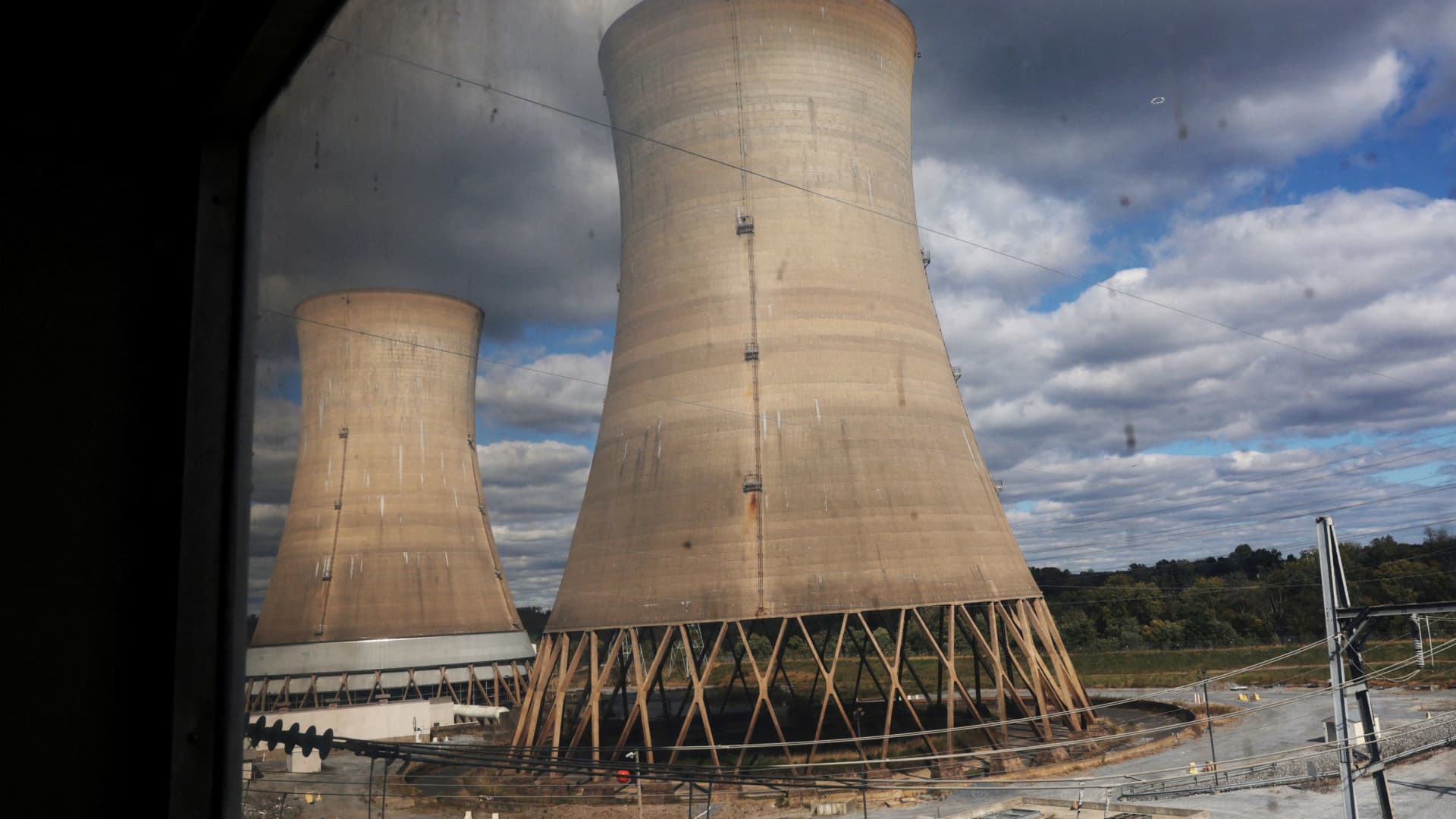

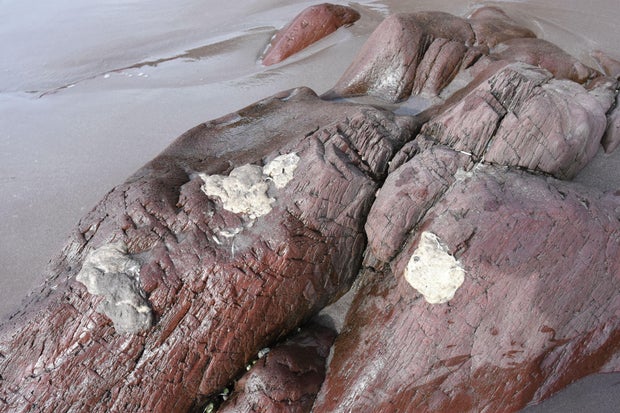


You must be logged in to post a comment Login